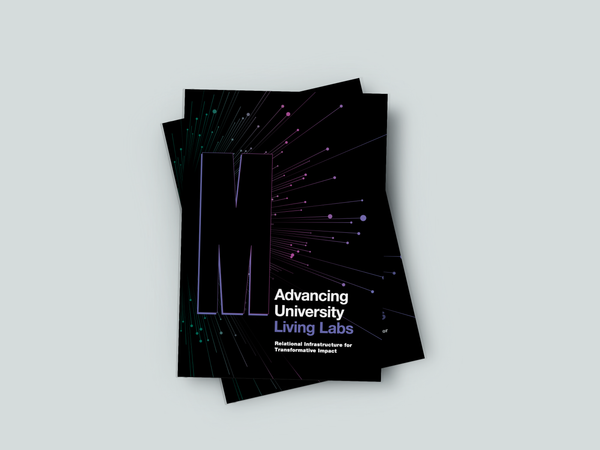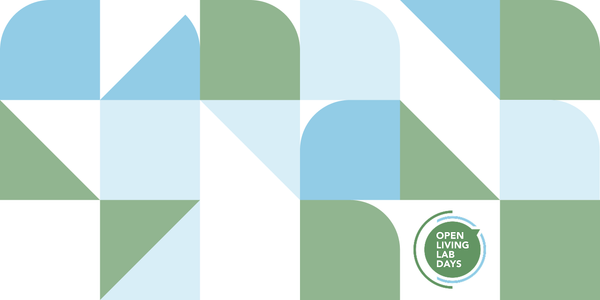Exploring Regenerative Design Methods
I was recently invited to work with Swinburne University’s Masters of Design Strategy & Innovation students, to deliver a participatory toolkit session using organic materials to scaffold their reflection on Design Leadership research thus far.
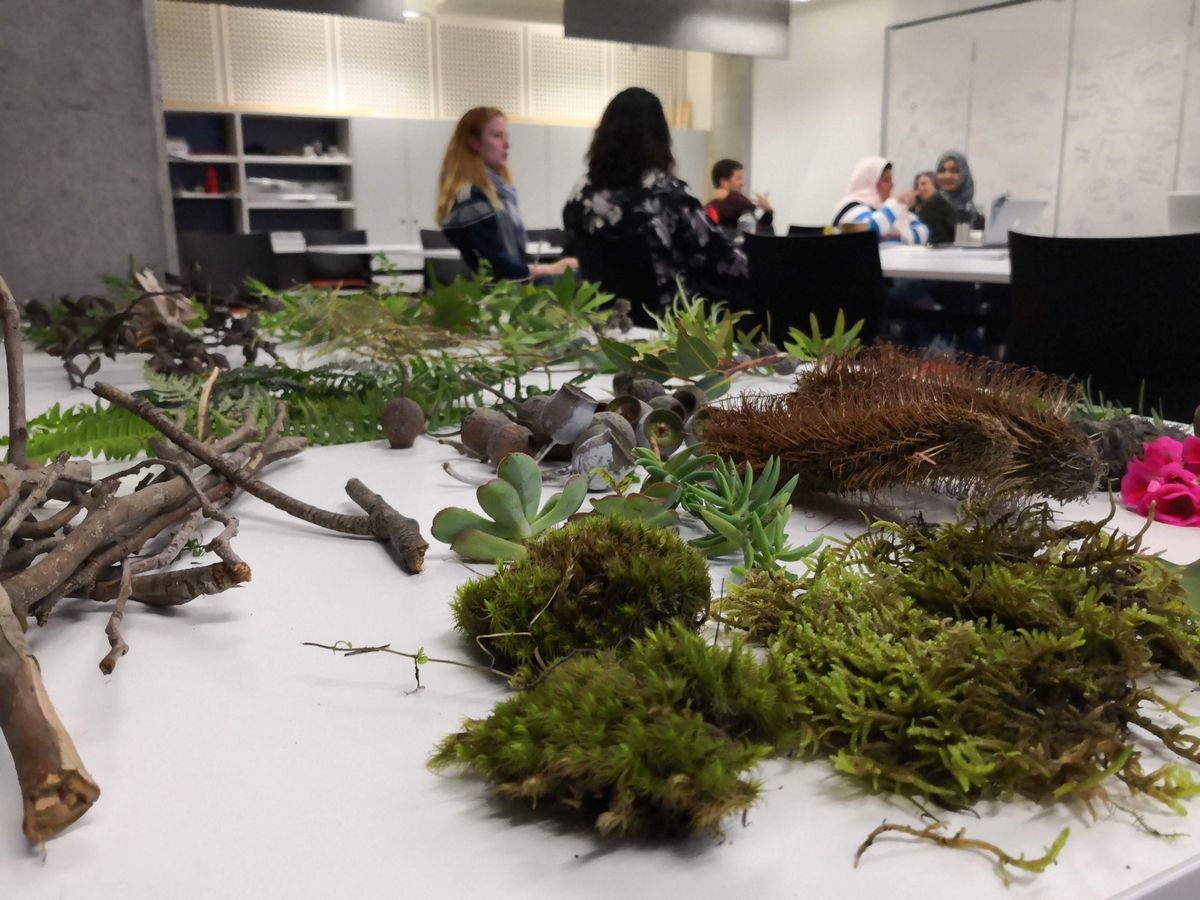
Working with organic materials to shift mindsets
I was recently invited to work with Swinburne University’s students studying a Masters of Design Strategy & Innovation, by the excellent Bridgette Engeler. We had met up and started talking about where Design (and the world) is headed, and we came to the conclusion that a 2 part workshop might act as a good provocation — the first part, a talk about ‘Decentering The User’, and the second part a participatory toolkit session to reflect back their studies on Design Leadership thus far.
I am writing up the Decentering The User talk as well (coming soon I hope), just subscribe above to see that.
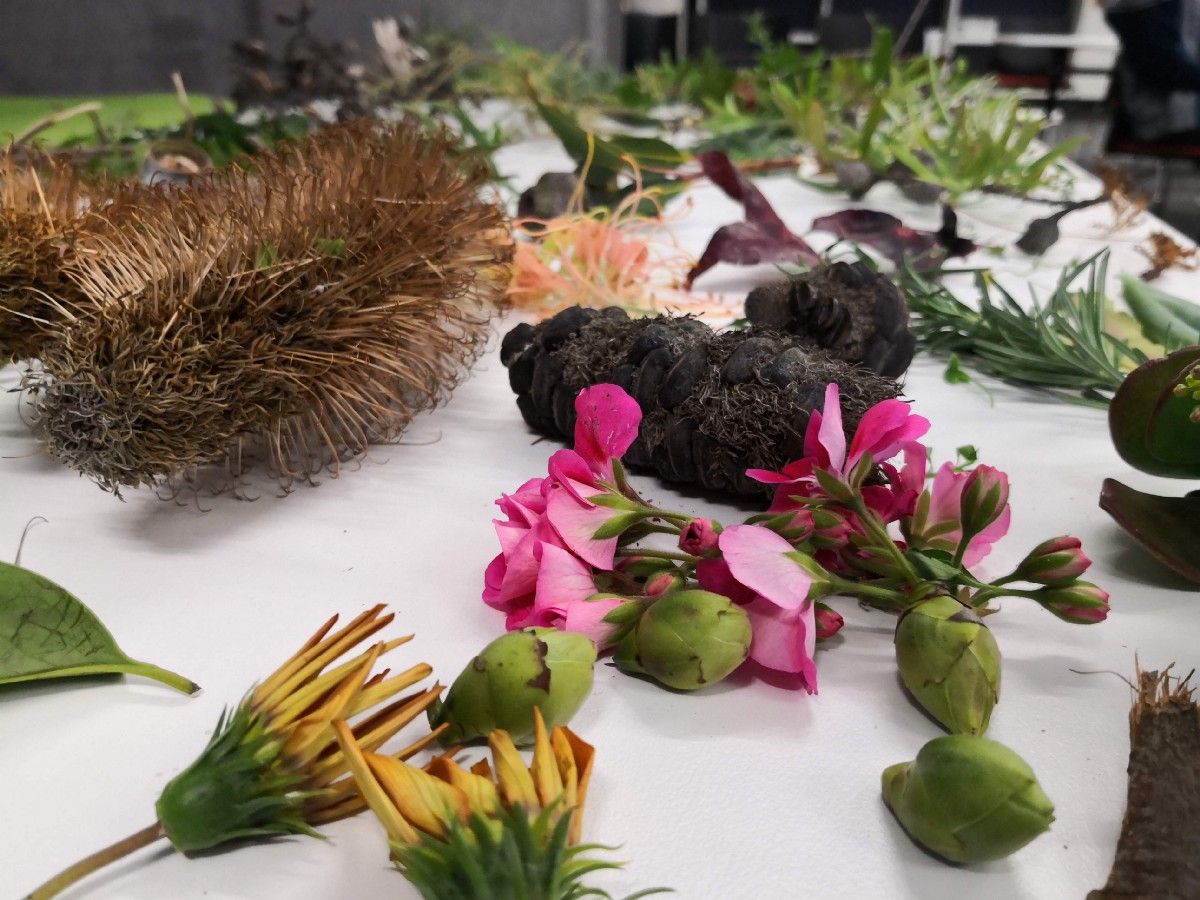
This is the third time I have run a workshop with natural / organic materials, instead of a more usual ‘design toolkit’ such as post it notes, lego, pipe cleaners etc etc. Instead of more synthetic materials, made by humans, I forage a range of materials from my home in the Yarra Ranges (and also for this session — additional materials from my parents-in-law garden, with my kids).
The origins of this workshop hark back to spending 4 days under the tutelage of Liz Sanders at Workchops in NZ, where we explored Participatory Design with a focus on ‘Toolkits’ [1]. I then took a step forward into my particular interest area, of using organic materials in my session at the Codesign Symposium in 2017, which sparked a number of interesting observations and reflections [2].
My talk on ‘Decentering The User’ hinted heavily towards inviting designers to step into a new version of the future, centered around regenerative practices. I wanted to show people exactly what that looked and felt like, and how it may change what and how we design.
The Brief
My instructions for this session were very simple:
- I want you to make 1–3 models, out of the materials I have brought, which represent your research on Design Leadership.
- At the end, I will ask people to share stories about their models, and we’ll engage in discussion at that point.
- You have 30 minutes.
The Models
The students, whilst seemingly a little nervous to jump in and tell the story of their models, did a great job. The point of these workshops is never really about the aesthetics or functionality of the model itself — they are a scaffold to get people to express half formed ideas, latent emotions, and tacit knowledge —all of which are often too difficult to articulate verbally or even when sketching. The process of making, helps to surface and give form to these ideas, emotions and knowledge, from which we can observe or draw meaning (Sanders and Stappers, 2012 [3]).
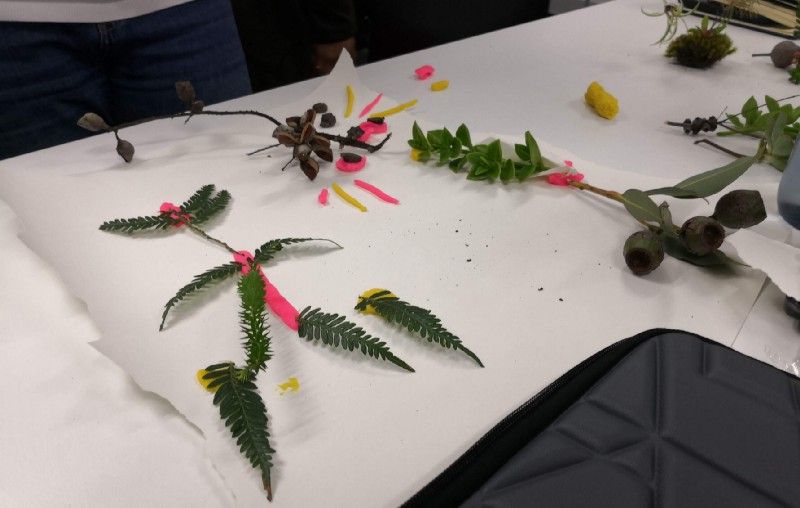
We got to hear from three of the participants, and they had entirely different models. Our first participant talked about a “traditional leadership” model which focused on holding power, and it’s (sometimes negative) effect on their team. She mentioned the use of materials was very conscious — the “leader” (a stem of succulent in the middle) was green and looked healthy. The rest of the team were signified as seed pods — dry and a little lifeless.
The second model focused on a more temporal form of leadership, which was represented by a small number of fern leaves of a common size and colour — a conscious choice to show leadership could come from anywhere. It was simple and dynamic, and compelling.
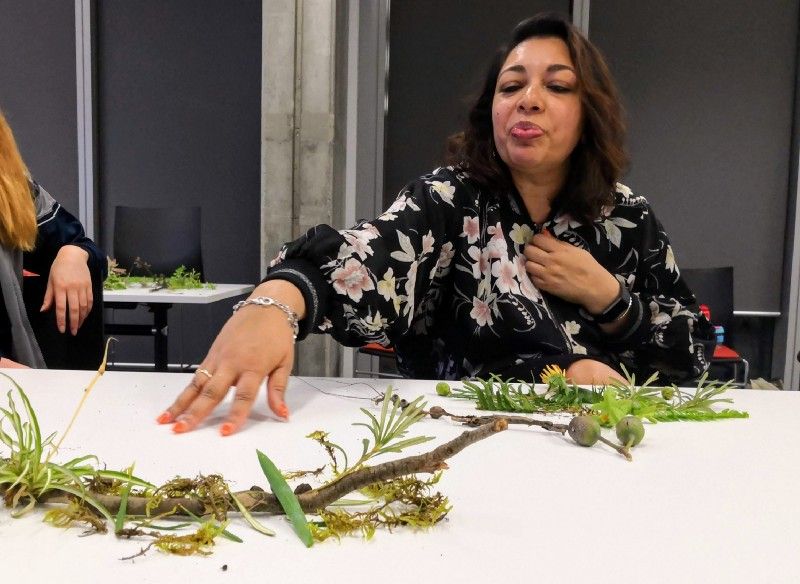
The next participant had developed two models; the first which modelled an organisation (represented as the stick) acting as an ecosystem with a variety of people and roles (represented by the variety of species — moss, leaves etc). She talked about how they were interconnected, and working together. Another participant mentioned the model felt like there was balance and harmony even before knowing it was about inclusivity and diversity.
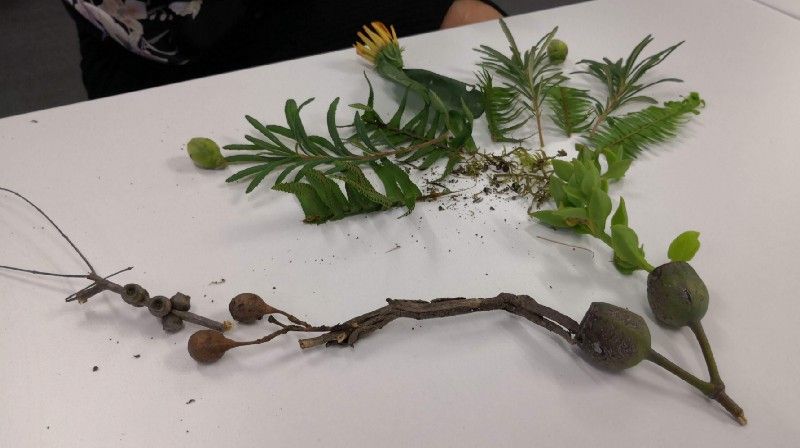
The second model was a departure from a literal representation of ‘people’ and ‘organisation’, veering towards more of an abstract representation of what would happen if we continue on the path of BAU. She mentioned that the decision feels so small at the initial forking of directions — both feel essentially the same (the choice between two green stems ending in a gumnut). However the BAU path was represented by the dry branch, and the ‘green and thriving branch’ represented more conscious design leadership choices which use foresight and sustainability at their core.
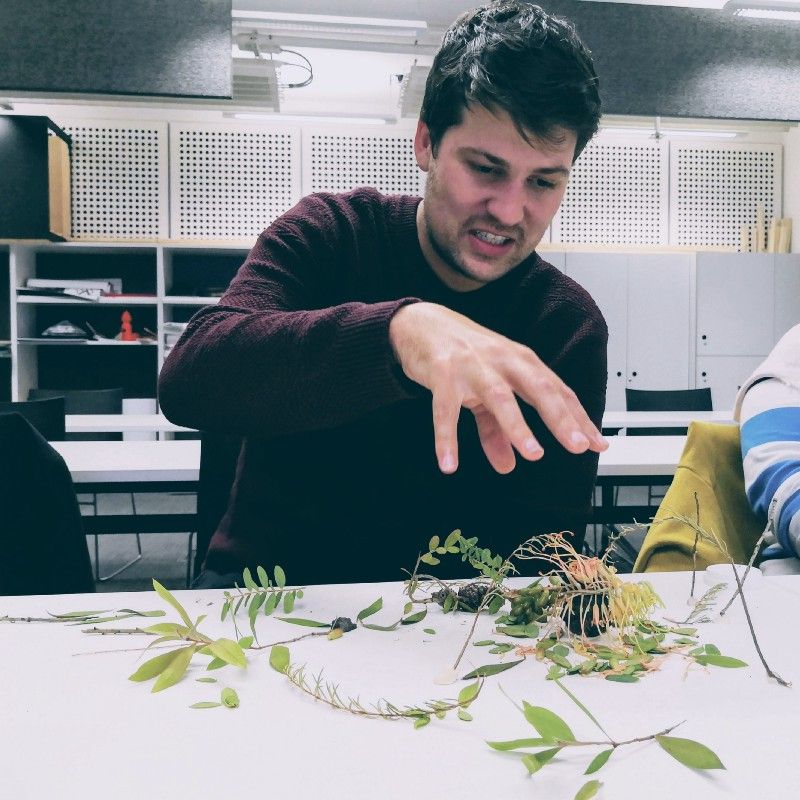
Our final participant developed a model which represented a creative team (represented by the grevillea flower) which faced the decision of whether or not to address a complex, gnarly problem.
The first branch of choice was ignoring the gnarly problem, and instead going down the ‘easy path’ of solving an easily definable problem, with feasible deliverables.
The second branch was about embracing the complexity, and getting involved in the dark matter of the gnarly problem — probing and making a difference, even if the results aren’t always clear.
It struck me that he was hinting at the edges of one of the recent critiques of Design which is too often practiced shallowly and at the mercy of a client, thus maintaining the status quo rather than challenging it [4].
Participant Reflections
These are some paraphrased reflections from the closing circle
Art & Nature Therapy
Several people mentioned that the session was calming, or felt like therapy. It was time spent just making, quietly, solo — which was juxtaposed with so many design activities they experienced which rushed people to ‘generate ideas quickly’ or had an insatiable appetite for sticky notes.
Sensory Inspiration
The materials smell, feel, look, all enlivened the senses and helped people to create in entirely different modes than normal. They mentioned that this was a very pleasant experience, but also reminded them to change elements of their practice to not just use visual or verbal stimuli.
Material Wisdom
People felt they used materials because of their physicality (such as textures, shapes, pliability), but also use them for more than just the aesthetic and functional value.
The materials can also have meaning — for example a seed pod literally has the ability to grow a tree, and thus is a great metaphor for potential. Likewise, choosing a green leaf over a brown leaf has connotations of life and death. I find this a fascinating area to explore more.
Some people mentioned they experienced a shift in mindset, most obvious as a change in their regular language, because of the materials. They mentioned immediately starting to use words like “Nurture” and “Nourishing”, which were not words they tended towards. This echoed the findings from my first run of this session.
Insights
These are some of my own thoughts rolling off the participant reflections, and noticings throughout this session.
Materials ‘Of This Place’
Given the reflections above, we can infer that the materials used in the toolkit can be seen as a creative source. If we change the source, we can influence the outcomes of the session.
If we ascribe to the concept of cosmopolitan localism (roughly speaking: thinking global, acting local) [5], or at least the importance of place-based approaches to developing ideas, identity, and sustainable futures, then I believe we have the opportunity to draw more inspiration from the bioregions in which we live and work. This is one way in which we can do that.
Other ways might be deeper practices, such as Biomimicry activities which take people out into the natural surrounds. However, I feel like this is a small gateway into more profound experiences, which is much needed.
As an example of how this could be used in practice; within my Masters, one of my final concepts was a self-guided workshop resource for environmental conservation groups to build alignment and momentum in their work, influenced and inspired by their unique local surrounds.
Complementary Activities
Depending on what we’re trying to achieve, we could build other activities around this ‘making with organic materials’ type work to bolster or influence the work in particular directions.
For example, if we’re trying to support individuals or groups to develop better understanding about a living system (such as a community or ecological niche) we may benefit from additional time outside observing nature, or at least stories of forests and how they act. This will help to enrich the making, as people may work across literal *and* abstract dimensions, rather than just one or the other.
Choosing Toolkit Materials
I am building a clear pattern of what I believe makes a good organic toolkit:
- Dense living matter — such as moss — which has a lot of variety and interconnection in its form.
- Vibrant, fresh, green materials — such as leaves or succulents — these often make up a significant amount of the toolkit, as they are plentiful and easily approachable.
- Dry materials — such as dried leaves — these provide a counterpoint to the green materials.
- Seed pods — such as Eucalyptus — I always try to include multiple types of seed pods as they are so fascinating in form, function and metaphor.
- Flowers — I find these are used frugally, but always add additional colour and meaning to people’s making.
- Sticks — for vertical / horizontal structure amongst other things.
- Playdoh — ideally homemade, and in several colours. Useful for sticking supporting, where needed.
Reminder: Try to remember to warn people that there could be living critters crawling out of the materials. Treat them with respect — they are as much a part of the idea, as the leaves and sticks. If you’re in Australia, don’t forget the potential there may be spiders hidden in the midsts…
Conclusion
I am feeling more confident that this way of integrating organic materials into my personal practice, and into the practice that I introduce to others through talks, workshops and consulting, has deep value.
I am keen to explore this both in a research capacity (if anyone knows of any avenues, please let me know) as well as building up a practice around this within my consulting and/or everyday work.
If you’d like to get in touch about any of that, please get in touch through over at my contact page.
References
[1] Elizabeth B.-N. Sanders & Pieter Jan Stappers (2014) Probes, toolkits and prototypes: three approaches to making in codesigning, CoDesign, 10:1, 5–14, DOI: 10.1080/15710882.2014.888183
https://www.tandfonline.com/doi/abs/10.1080/15710882.2014.888183
[2] Sam Rye (2017) The Codesign Symposium Reflections — Part III: Metaphor, evocation and the wisdom of nature, Fieldnotes by Sam Rye on Medium.
https://medium.com/fieldnotes-by-sam-rye/the-codesign-symposium-reflections-part-iii-15378196930f
[3] Elizabeth Sanders & Peter Jan Stappers (2012) *Convivial Toolbox: generative research for the front end of design *(3rd ed., Vol. 3). Amsterdam, The Netherlands: BIS Publishers.
https://www.bispublishers.com/convivial-toolbox.html
[4] Natasha Iskander (2018) Design Thinking Is Fundamentally Conservative and Preserves the Status Quo. HBR.
https://hbr.org/2018/09/design-thinking-is-fundamentally-conservative-and-preserves-the-status-quo
[5] Manzini, E. (2015). Design, When Everybody Designs — An Introduction to Design for Social Innovation. (F. Ken & E. Stolterman, Eds.) (1st ed.). Cambridge: The MIT Press.
https://www.goodreads.com/book/show/23461349-design-when-everybody-designs




